Link
Hey guys.
As many of you might know, the economic situation in Argentina is incredibly complicated right now, I need to raise 400USD before November 2nd to be able to undergo abdominal repair surgery.
I have no job and it’s impossible for me to get this money. I’m quite desperate as you can see.
If you could pitch in, or share, I’d greatly appreciate it.
Also, if anyone’s interested in purchasing this blog, DM me. Huge outreach + tumblr radar feature + recommended blogs feature + 76k followers.
83 notes
·
View notes
Photo
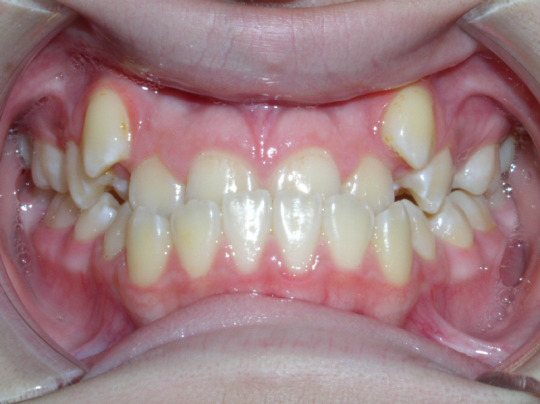
High canines are canine teeth (the teeth in the third position from the midline) that are too high in your mouth. This patient also has an underbite.
1K notes
·
View notes
Photo
biomedicalephemera:
Nasal Accessory Sinuses
I had a question regarding the location of the ethmoid sinus the other day. This is one of the better diagrammatic skulls that I’ve seen that displays their position in relation to the face. On the inside edge of the orbit, the cells that have been laid bare are the ethmoidal air cells. The ethmoid sinus isn’t one single cavity within the skull, but several sets of air cells within the ethmoid bone, behind the nasal cavity.
Diseases of the Nose and Throat. Herbert Tilley, 1919.
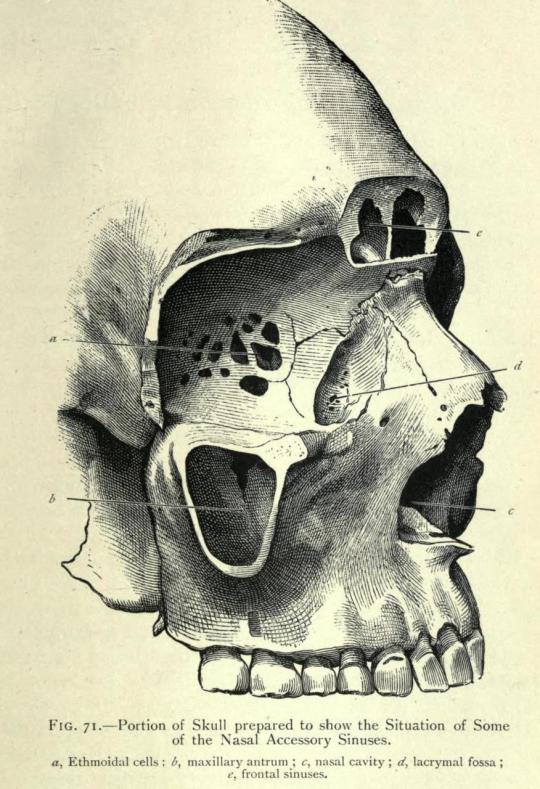
481 notes
·
View notes
Photo

Utrecht goitre (Utrechtse Krop) is the title of a collection of photographs by Paul Kooiker. The book includes images of the file Utrecht University Hospital, some of them around 1890.
“Utrechtse Krop” (Utrecht goitre) was the name given to a thyroid condition once common in the Dutch town of Utrecht, due to a deficiency of iodine in drinking water.
1K notes
·
View notes
Photo

How the Eyes Might Be Windows to the Risk of Alzheimer’s Disease
Researchers say how quickly a person’s pupil dilates while taking cognitive tests
Alzheimer’s disease (AD) begins to alter and damage the brain years — even decades — before symptoms appear, making early identification of AD risk paramount to slowing its progression.
In a new study published online in the September 9, 2019 issue of the Neurobiology of Aging, scientists at University of California San Diego School of Medicine say that, with further developments, measuring how quickly a person’s pupil dilates while they are taking cognitive tests may be a low-cost, low-invasive method to aid in screening individuals at increased genetic risk for AD before cognitive decline begins.
In recent years, researchers investigating the pathology of AD have primarily directed their attention at two causative or contributory factors: the accumulation of protein plaques in the brain called amyloid-beta and tangles of a protein called tau. Both have been linked to damaging and killing neurons, resulting in progressive cognitive dysfunction.
The new study focuses on pupillary responses which are driven by the locus coeruleus (LC), a cluster of neurons in the brainstem involved in regulating arousal and also modulating cognitive function. Tau is the earliest occurring known biomarker for AD; it first appears in the LC; and it is more strongly associated with cognition than amyloid-beta. The study was led by first author William S. Kremen, PhD, and senior author Carol E. Franz, PhD, both professors of psychiatry and co-directors of the Center for Behavior Genetics of Aging at UC San Diego School of Medicine.
The LC drives pupillary response — the changing diameter of the eyes’ pupils — during cognitive tasks. (Pupils get bigger the more difficult the brain task.) In previously published work, the researchers had reported that adults with mild cognitive impairment, often a precursor to AD, displayed greater pupil dilation and cognitive effort than cognitively normal individuals, even if both groups produced equivalent results. Critically, in the latest paper, the scientists link pupillary dilation responses with identified AD risk genes.
“Given the evidence linking pupillary responses, LC and tau and the association between pupillary response and AD polygenic risk scores (an aggregate accounting of factors to determine an individual’s inherited AD risk), these results are proof-of-concept that measuring pupillary response during cognitive tasks could be another screening tool to detect Alzheimer’s before symptom appear,” said Kremen.
106 notes
·
View notes
Link
Hey guys.
As many of you might know, the economic situation in Argentina is incredibly complicated right now, I need to raise 400USD before November 2nd to be able to undergo abdominal repair surgery.
I have no job and it’s impossible for me to get this money. I’m quite desperate as you can see.
If you could pitch in, or share, I’d greatly appreciate it.
Also, if anyone’s interested in purchasing this blog, DM me. Huge outreach + tumblr radar feature + recommended blogs feature + 76k followers.
83 notes
·
View notes
Photo
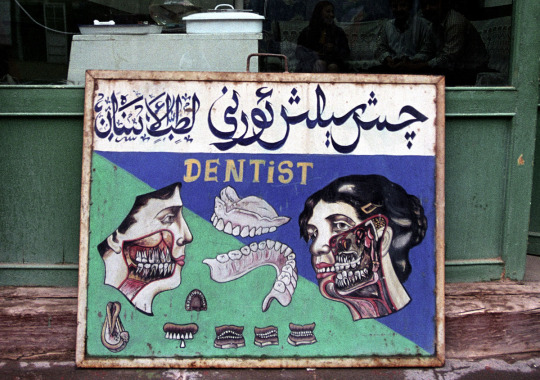
Sign at Uyghur dentist office, Xinjiang Province, China, 2002.
20K notes
·
View notes
Photo

The Center for Medicinal Cannabis Research at University of California San Diego School of Medicine announces $3 million in research grants to explore new applications of cannabis for a number of novel medical applications.
“Within the medical community, there is a lot of interest in the role of medical cannabis and CBD,” said Igor Grant, MD, Distinguished Professor in the Department of Psychiatry and CMCR director. “There is a hope that it could be yet another useful agent in some of these conditions, which are difficult to treat or disabling.”
The five grants are funded by California Proposition 64, which was passed on the November 8, 2016 ballot and legalized recreational marijuana in the state. The measure allocated tax revenue for research on potential new drugs, treatment and health and safety programs related to marijuana and medical cannabis.
This year marks CMCR’s first such funding. All five grants are for proof-of-principle studies that would seek to establish the basis for future research.
Effects of Cannabidiol versus Placebo as an Adjunct to Treatment in Early Psychosis
Therapeutic Response of Cannabidiol in Rheumatoid Arthritis
Cannabidol for Sedative/Hypnotic-sparing Management of Insomnia in Adults
Cannabidiol as a Strategy to Treat Alcohol Dependence
The Role of Cannabidiol in Regulating Meal Time Anxiety in Anorexia Nervosa
A second round of CMCR grants is scheduled for 2020.
“UC San Diego’s Center for Medicinal Cannabis Research Awards Grants for Five Novel Studies“
63 notes
·
View notes
Link
Hey guys.
As many of you might know, the economic situation in Argentina is incredibly complicated right now, I need to raise 400USD before November 2nd to be able to undergo abdominal repair surgery.
I have no job and it’s impossible for me to get this money. I’m quite desperate as you can see.
If you could pitch in, or share, I’d greatly appreciate it.
Also, if anyone’s interested in purchasing this blog, DM me. Huge outreach + tumblr radar feature + recommended blogs feature + 76k followers.
83 notes
·
View notes
Photo

Position in extracting a tooth from the right upper jaw.
Fun with dentistry!
There are a LOT of different tools that are used for extraction. There was one tool that could do all the different teeth (the dental key), but it was not as effective as having forceps specialized for each area of the mouth.
Atlas and Text-Book of Dentistry Including Diseases of the Mouth. Gustav Preiswerk, 1906.
498 notes
·
View notes
Link
Hey guys.
As many of you might know, the economic situation in Argentina is incredibly complicated right now, I need to raise 400USD before November 2nd to be able to undergo abdominal repair surgery.
I have no job and it’s impossible for me to get this money. I’m quite desperate as you can see.
If you could pitch in, or share, I’d greatly appreciate it.
Also, if anyone’s interested in purchasing this blog, DM me. Huge outreach + tumblr radar feature + recommended blogs feature + 76k followers.
83 notes
·
View notes
Text
New Diagnostic Criteria May Enable Earlier Detection of Cognitive Impairment in Women

Tailoring verbal memory test criteria to patient’s sex may improve diagnostic accuracy in mild cognitive impairment
Women make up two-thirds of patients with Alzheimer’s disease — so why is it that women are less likely than men to be diagnosed with its precursor, amnestic mild cognitive impairment (aMCI)? This was the question guiding a new study by University of California San Diego School of Medicine researchers studying how the life-long female advantage in verbal memory performance might be masking early symptoms of dementia in women.
In a study published October 9, 2019 by Neurology®, the medical journal of the American Academy of Neurology, the team studied the data of nearly 1,000 patients who participated in the Alzheimer’s Disease Neuroimaging Initiative (ADNI) and found that when verbal memory test cut-offs were tailored to patient sex, more female patients and fewer male patients were considered to have aMCI. This could change the way aMCI diagnoses are determined and make it easier to catch the condition in its early stages.
“The point of the study was to see if we adjusted for this sex difference in verbal memory and made the cut point for impairment more conservative in women, would we be able to detect them earlier in the disease trajectory?” said first author Erin Sundermann, PhD, assistant project scientist in the Department of Psychiatry at UC San Diego School of Medicine. “That’s important because currently the interventions that we have are likely most effective in the earlier stages.”
“New Diagnostic Criteria May Enable Earlier Detection of Cognitive Impairment in Women“
46 notes
·
View notes
Link
Hey guys.
As many of you might know, the economic situation in Argentina is incredibly complicated right now, I need to raise 400USD before November 2nd to be able to undergo abdominal repair surgery.
I have no job and it’s impossible for me to get this money. I’m quite desperate as you can see.
If you could pitch in, or share, I’d greatly appreciate it.
Also, if anyone’s interested in purchasing this blog, DM me. Huge outreach + tumblr radar feature + recommended blogs feature + 76k followers.
83 notes
·
View notes
Photo


“PHAGEDENIC CONDITION OF GUNSHOT WOUND”
When invasive organisms were introduced to the body via gunshot wounds, a “phagedenic condition” (“eating-sloughing”) can occur. It was treated the same way as all other ulcers developing wet gangrene - amputation.
Charles F. Barnum, Private in Co. E, of the 187th Regiment of Pennsylvania Volunteers, was shot in the Battle of Petersburg, VA, and was photographed and illustrated when his ulcer extended 6.5 inches from his ankle. The amputation was performed just below the tubercule of the tibia, and healed fully. No prosthetic was recorded before discharge.
Photograph from National Museum of Health Archives. Contributed Photograph 1183.
548 notes
·
View notes
Text
Lung Cancer Deaths are 28 Percent Lower in California

State’s long-term, aggressive tobacco control programs cited as primary reason
Early adoption of tobacco control efforts in California lead to fewer people ever smoking, reduced the amount used by those who do smoke and helped smokers quit at a younger age — when their risk of developing lung cancer is lowest. As a result, say the authors of a new study published online today in Cancer Prevention Research, lung cancer deaths are 28 percent lower in California compared to the rest of the country and the gap is widening each year by almost a percentage point.
Researchers at University of California San Diego School of Medicine and Moores Cancer Center say California’s approach has been particularly effective in discouraging young people from starting to smoke. The state has achieved success by aggressively responding to early evidence linking smoking to lung cancer with policies aimed at discouraging smoking and then, in 1988, by passing a voter initiative to set up the nation’s first comprehensive statewide tobacco control program run by the California Department of Public Health.
“It is clear that from the early days of tobacco control, young people in California became increasing less likely to become addicted smokers,” said John P. Pierce, PhD, Professor Emeritus of Cancer Prevention at UC San Diego School of Medicine and Moores Cancer Center and lead author of the study. “What we saw is that among people under 35 years old, the combination of a 39 percent lower initiation rate, 30 percent lower consumption of cigarettes among those who did smoke, and a 24 percent higher early quit rate meant that young Californians now have much less exposure to cigarette smoking than those of similar age in the rest of the country.”
Pierce and team analyzed data on smoking behavior from the National Health Interview Survey (1974-2014) and lung cancer data from the national Surveillance Epidemiology and End Results (SEER) Program (1970-2013). The study included survey responses on smoking behavior from a representative sampling of 962,174 United States residents, with approximately 10 percent of respondents living in California.
Lung cancer mortality rates were derived from a collection of all death certificates filed in the 50 states and the District of Columbia. Age-adjusted lung cancer mortality rates for those 35 years or older were calculated using the national SEER statistical database.
“Lung cancer mortality in California declined from an annual rate of 108 per 100,000 people over 35 years of age in 1985 to 62.6 per 100,000 in 2013. The speed of this decline is 33 percent faster than it has been in the rest of the United States. This is the largest decline ever seen in what has been the biggest epidemic of our time,” said Scott M. Lippman, MD, UC San Diego School of Medicine Chugai Pharmaceutical Chair in Cancer and director of UC San Diego Moores Cancer Center. “While quitting smoking has increased across the country, this does not explain why the decline in lung cancer has been so much faster in California. This can only be attributed to the success of tobacco control in this state which has been so effective in convincing young people not to smoke.”
According to the Centers for Disease Control and Prevention, more than 7,000 chemicals are found in tobacco smoke and at least 70 of those chemicals are known carcinogens. Cigarette smoking has been linked to up to 90 percent of lung cancers in the U.S. People who smoke are 15 to 30 times more likely to be diagnosed with lung cancer than nonsmokers.
Preventing people from ever picking up cigarettes is the most effective strategy to reduce the health consequences of tobacco use, wrote the authors, but the reduction in the number of people dying from lung cancer would be much greater if more current smokers quit.
“Quitting smoking at any age will improve a person’s quality of life,” said Pierce. “But quitting before the age of 35 could help smokers avoid nearly all the negative health effects of smoking. Quitting by age 50 could reduce a person’s risk of disease by almost half.”
Live in California and need help with quitting smoking? Call the California Smoker’s Helpline at 1-800-NO-BUTTS
131 notes
·
View notes
Link
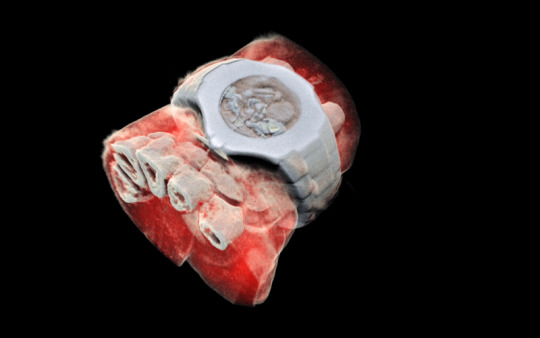
139 notes
·
View notes
Photo
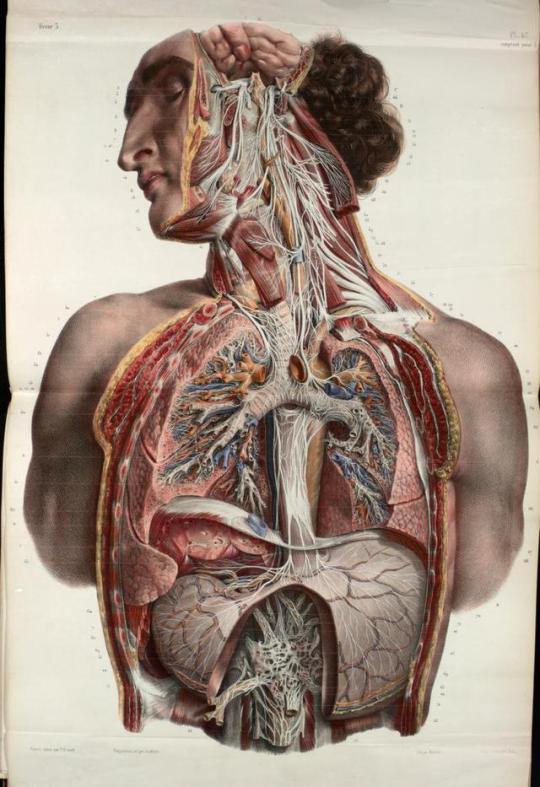
Anatomy Illustrations 1800s | Torben Friedrich
1K notes
·
View notes